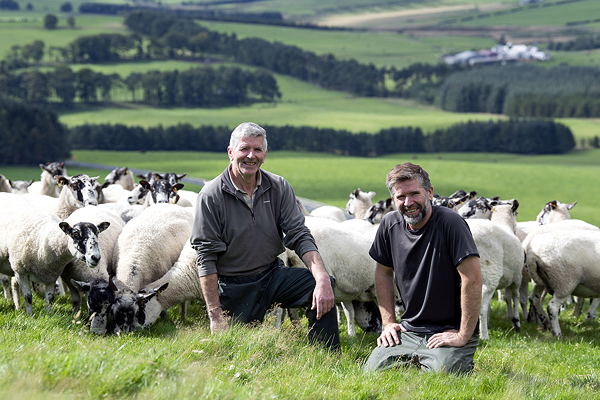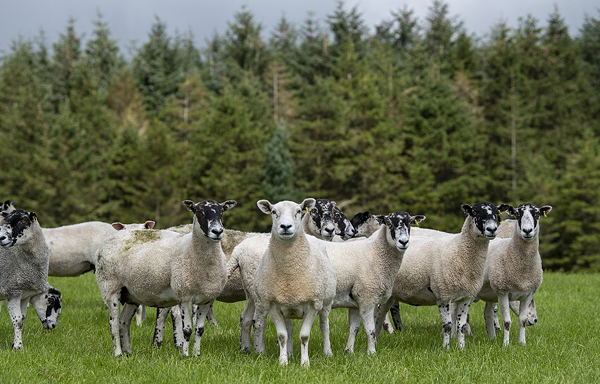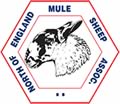| 2020-09-08 |
North of England Mule - the Rolls Royce of Sheep
Wayne Hutchinson visits the Tweedie family in Biggar on the northern edge of the Southern Uplands in South Lanarkshire and learns why they think the North of England Mule is the Rolls Royce of the sheep industry.
Heading North over the border isn’t the traditional route for most Mule gimmer lambs sold at NEMSA sales in the autumn, but for the last 40 years or so, Billy Tweedie and son, Thomas, have been doing just that - buying lambs from the Alston Moor sale at Lazonby and taking them to Brownsbank Farm, Biggar, where they fit perfectly into their farming system.
North of England Mule aficionados through and through - Billy Tweedie and his son, Thomas
Thomas’s great grandfather came to Brownsbank back in 1939 and the family has been there ever since. It sits aside the busy A702 Edinburgh road, just out of Biggar, and runs to around 500 acres, which is all down to grass, running from 800-1300 feet above sea level.
It carries 750 lambing ewes, made up of 700 North of England Mule ewes and 50 Texel X sheep retained out of the Mules, and lately 65 head of Luing cattle, which replaced a herd of Limousins which were sold a few years back.
The first Mules came to Brownsbank around 40 years ago when they couldn’t get enough Scotch Mules, which they traditionally carried. Billy saw the Lazonby Alston Moor sale advertised with 30,000 lambs entered and went down to see…and was hooked.
They returned the following year and the last of the Scotch Mules went the following year. They felt the North of England Mule was just a nicer temperament and with better mothering ability compared to what they were used to.
“We got some more Scotch Mules in 2001 during the FMD as we couldn’t travel down to the North of England….it was the first time Thomas had worked with them….and he didn’t appreciate the difference and that batch only lasted a couple of years,” says Billy.
They have built up a good rapport with customers over the years and generally go back to the same flocks, buying over the years from John Reid, Saunders Close, Thompsons from Unthank and the legend that is Peter Lee. “We tend to stick to the regular flocks as we know the sheep they breed, and they do well for us,” says Thomas.
There has been a slight change of policy this last couple of years when they lost some grazing, so rather than buying gimmer lambs they have been buying shearlings which have already had lambs, the idea being that though they maybe have less sheep they would get a similar number of lambs.
The North of England Mules are noted for being prolific and the Tweedies are generally scanning around 233% with the Mule ewes and a whopping 271% among the Texel X Mules which they have retained over the last few years, running to around 50 or so.
The North of England Mule ewes are great mothers, they find, and the milkiness of the breed helps as the lambs are all finished straight off grass, then sold direct to Scotch Lamb Marketing at around 44-45kgs; that the Texel crossed with the Mule is the ideal combination on Brownsbank.
Lambing starts in third week of March, with all the sheep housed inside when the weather deteriorates in the winter. This allows the grass to freshen up and is better for the ewes as they get turned out.
Looking back over the last 40 years working with the North of England Mules Billy has only praise for the sheep. He said: “They are just so easy to work with and such good mothers, they are a pleasure to work with, they wear well and produce a great lamb. To me, I feel that they are the Rolls Royce of the sheep industry.”
This year’s Lazonby Alston Moor sale is on Wednesday, September 30th.




